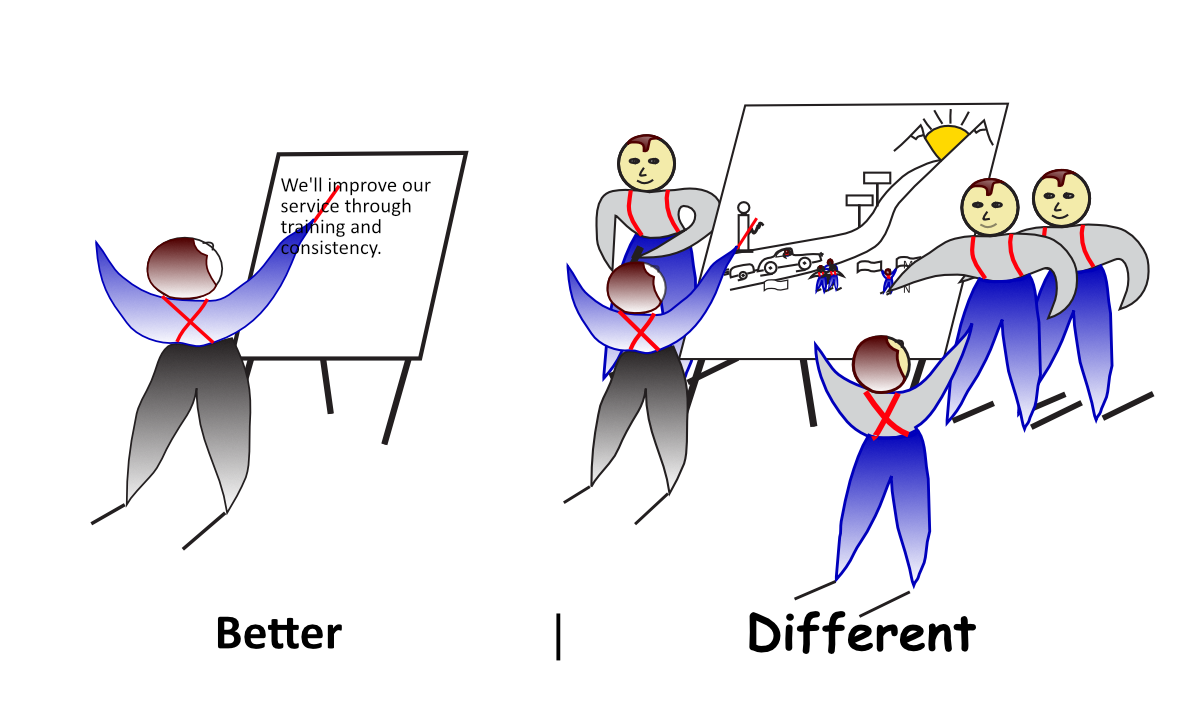March 2011 - The FoCuSeD™ Facilitator eNewsletter (updated June 2022)

Transformational Change Gary Rush Facilitation - Gary Rush, IAF CPF | Master
When we facilitate, one goal is to enable people and organizations to achieve success, which is Transformational Change. This is defined as:
Transformational Change = Quality of the Solution times the Engagement and Commitment of the People.
Since the Facilitator establishes the process (in collaboration with the client), we can help ensure a quality solution as well as the engagement and commitment of the people. Some things to think about when you are facilitating:
- Are you helping the group work towards a solution that is better (slight improvement) or different (transformational)?
- Are the questions being asked, by you and the participants, driving innovation or stifling it?
Better | Different
Sometimes people and organizations take the path of least resistance. They may recognize that there is a need for change but, to keep it safe, they jump to solutions that sound better, but have they made it different? Let’s look at the following example:
Example
There are two fine dining restaurants in a local area – both cuisines are excellent. They are both trying to increase customer loyalty. They both realize that service is the differentiating factor.
- Restaurant A decides to make their service better. They make it crisper, ensure that all wait staff smiles, timing is perfect, and that customers feel well served.
- Restaurant B decides to make their service different. They change the wait staff outfits to match the restaurant theme; they script the wording so that service is delivered with poetic phrases; they make service more of an event.
Which restaurant do you think made more of an impression on its customers? Facilitators need to question participants to help them recognize and then decide whether it’s better or different.
Innovation Questions
The following are innovation questions that will help participants explore their creativity to make conscious decisions. Note: Do not violate neutrality.
Why? Why Not?
When a participant presents an idea, do others respond with, “Why?” Participants asking, “Why?” are locked into existing paradigms and they are eliminating ideas before they have explored them. As Facilitator, you can establish a framework wherein every time that someone asks, “Why?” the participants or you respond with, “Why not?” By asking, “Why not?” you are asking participants to evaluate their paradigms. This is a variation on the paradigm-shift question – “What if…?”. Participants may be pleasantly surprised by the creative ideas that they develop.
Yes, and… Yes, but…
“Yes, and…” adds to an idea while, “Yes, but…” takes away from an idea. Building on ideas is more constructive and leads to more innovative ideas and greater acceptance because more people contributed to it. A ground rule of, “No yeah, buts…” helps head this off because people bring judgment into ideas too early. Brainstorming was created to build on ideas and postpone judgment. Encourage piggybacking on ideas.
What if…?
This is the original paradigm shift question, “What if this was different? What are the possibilities?” Getting participants to look at “possibilities” is important. Often, they will dismiss ideas because existing paradigms tell them that it is “impossible”. Well, what is impossible with one paradigm is possible with another. When participants look at the possibilities, they may find ideas that make changing the paradigms compelling – e.g., a compelling solution.
Creativity enables generating something new, surprising, unusual, novel, or original that solves the problem. Creativity can be introduced to participants through process and exercises. Creativity can be encouraged through questions. Transformational change brings innovation. 

